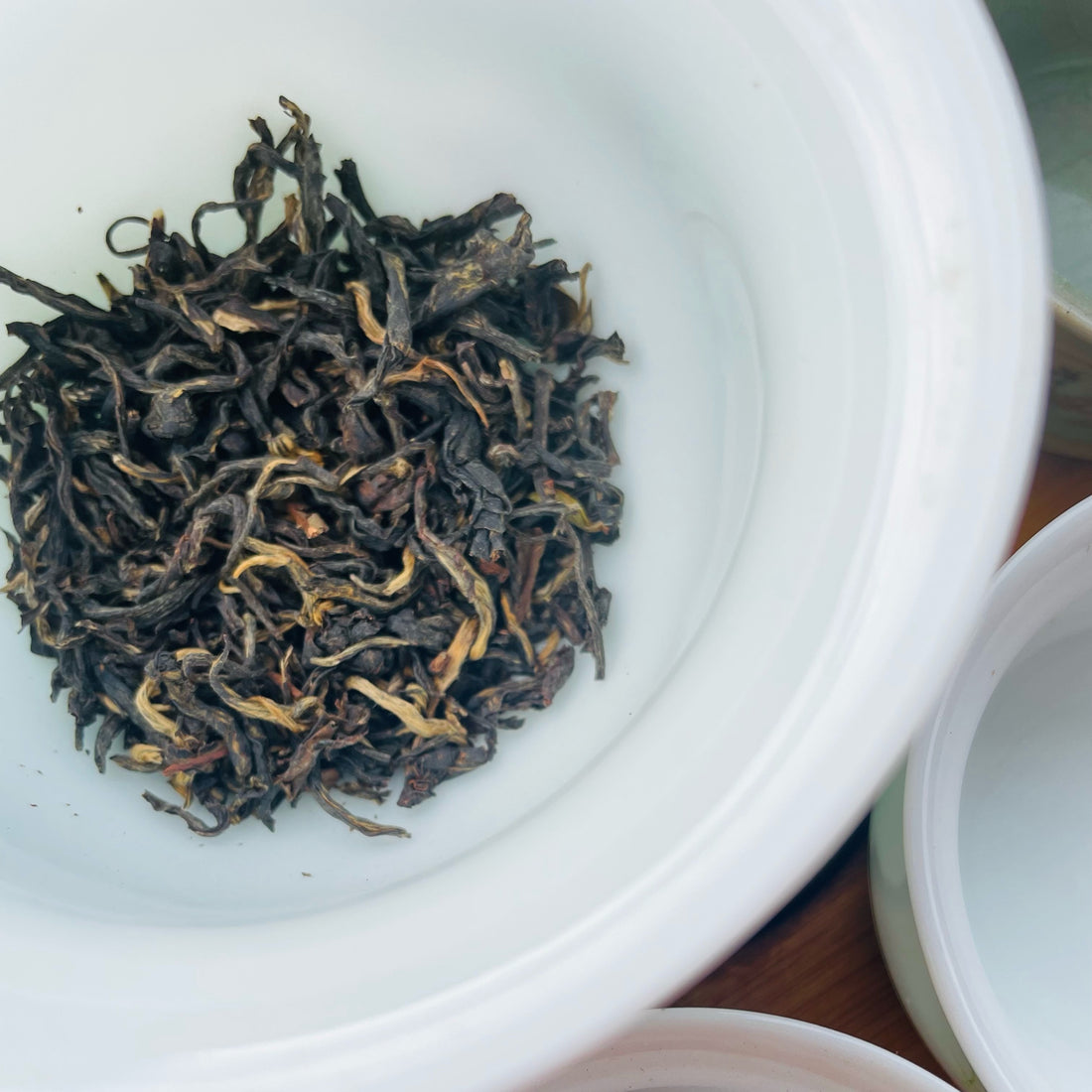
What are the Types of Black Tea and How is it Harvested?
Share
Click here to view the premium black tea sold at 'The 80's Tea' store.
What are the types of Black Tea and how is it harvested?
Black tea is categorised into nine main types. Each varies in taste and aroma, and differs in planting area, but has similar production techniques.
What are the different types of Black Tea?
Lapsang Souchong Black Tea (Wuyi Mountain, Fujian Province, China)
Lapsang Souchong is the first black tea created in 1646. It originated from Wuyi Mountain in northern Fujian Province, China. It consists of Camellia Sinensis. Var sinensis which has smaller leaves. The leaves are dried over pinewood fire which gives it its unique signature aroma and taste of smoky wood, pine resin, and dried longan. It was brought to Western countries by the Dutch in the 19th century. Since then, black tea has become one of the most popular beverages in the world.
This original and authentic black tea grown in the town of Tongmuguan, Wuyi Mountain of Northern Fujian Province is called Lapsang Souchong. This helps identify this tea from other black teas.
Click here to buy Lapsang Souchong at 'The 80's Tea' store.
Keemun Black Tea (Anhui Province, China)
Keemun black tea is produced exclusively in the town of Qimen in South Anhui Province, China. It was first created in 1875 using techniques adapted from the tea farms in Fujian provinces that created Lapsang Souchong black tea. It has the characteristic of stone fruit, a floral and smoky aroma, with a taste of malty and non-astringent unsweetened cocoa. It is still being used for classic blends.
Dianhong Black Tea (Yunnan Provine, China)
Compared to Lapsang Souchong black tea and Keemun black tea, Dianhong black tea is relatively young. It was only created in the early 20th century. It is grown in Yunnan province, China, which has an ancient history, with tea growing before the Han Dynasty (206 BCE - 220CE). Dianhong black tea is from the tea plant Camellia Sinensis var. Assamica, which has bigger leaves. The fine dianhong black tea has a brassy golden orange colour and a sweet and gentle aroma with no astringency. Lower-grade Dianhong black tea has a dark brownish colour and can be bitter.
Yingde Black Tea (Guangdong Province, China)
Yingde black tea is younger than Dianhong black tea and is also from the plant Camellia sinnsis var assamica. It has a cocoa-like taste and aroma, and a sweet aftertaste.
Assam Black Tea (Assam, India)
Assam black tea is named after its original production region in India. It is from the plant Camellia sinensis var. Assamica. The initial plant tea brought by the British from China wasn’t successfully planted in Assam soil. However, the same plants were recognized decades later when it was mistaken for camellia kiisi and planted by a botanist in 1836.
Darjeeling Black Tea (Darjeeling, India)
While Assam black tea is grown in the lowland of Assam, Darjeeling black tea is grown in the highlands. It is made from Camellia Sinensis var. Sinensis, and was first planted in the Darjeeling area from seeds originally brought from China by the British East India Company. The climate in India creates four distinct periods of cultivation and characteristics.
Ceylon Black Tea (Sri Lanka)
Ceylon is a brand of tea which is produced in Sri Lanka. Sri Lanka has the climate and varied elevation for the production of both Camellia sinensis var. Assamica (bigger tea leaves) and var. Sinensis (smaller leaves). The assamica is still the majority of the tea produced.
English Breakfast Tea
English Breakfast Tea is a traditional blend of black teas originating from Assam, Ceylon, and Kenya.
Earl Grey Tea
Early Grey tea is a tea blend and has been flavoured with bergamot oil, which gives it its unique taste. Early Grey is typically made from Chinese Keemun black tea, while some are blended with Lapsang Souchong black tea to provide a smoky character.
What is the process of harvesting black tea?
The basic process of harvesting black tea is withering, rolling, oxidising, and drying.
What makes black tea an outlier is its oxidization process. This process creates health benefits when the natural chemical of condensed catechins, such as polyphenols, are formed.
What are the six factors influencing the oxidization of the leaf and how the black tea tastes?
- The right temperature triggered for the oxidization process – The temperature needs to be around 29℃. Any fluctuation in this temperature will greatly affect the amount of moisture the leaf loss and the amount and type of catechins that are oxidized.
- The consistency and strength of the withering - If the leaves were unevenly withered or wither too quickly, the leaf’s catechins will oxidize differently, which will subsequently alter its aroma and taste.
- The size – The size of the leaf affects the time catechins have to react with oxygen. Therefore, the size of the leaf plucked is one of the most important requirements from the start of the production process when trying to produce premium quality. The size of the leaf significantly influences the oxidisation result, and its taste and aroma.
- The cultivars and planted area – A cultivar is a tea plant variety that has been produced through selective breeding. This plus the areas surrounding the plant can lead to uneven oxidation due to the different conditions of leaves and their oxidation capacity. This includes growing in different conditions where some are at higher altitudes versus those in lower altitudes, or plants grown in full sun versus partial sun.
- The evaluation of the four distinct taste characteristics: Briskness, brightness, astringency, and strength - Each of these characteristics emerges and then disappears at different stages of the oxidisation process. The tea master needs to determine which of these characteristics take precedence and to balance their presence in black tea.
- The environmental conditional in which the oxidisation process takes place – Where the oxidisation is performed and its consistency has a significant influence on the result. This includes room temperature, breeze, moisture level in the air, etc.
Click here to view the premium black tea sold at 'The 80's Tea' store.
